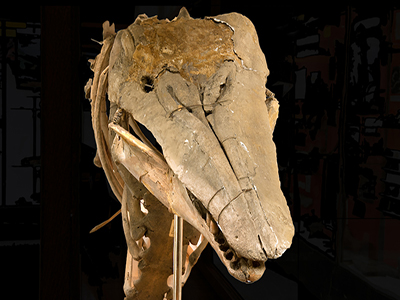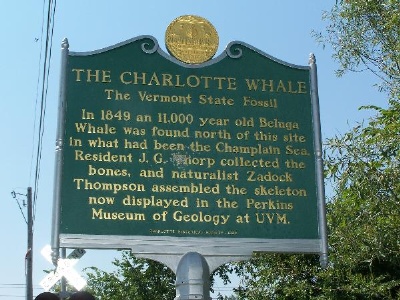Explaining a whale in Vermont
Because Charlotte is far inland (over 150 miles from the nearest ocean), early naturalists were at a loss to explain the bones of a marine whale buried beneath the fields of rural Vermont. Today, we can use the Charlotte whale to aid in the study of the geology and the history of the Champlain Basin.
How did a whale get in Vermont?
The Charlotte whale was preserved in the sediments of the Champlain Sea, an arm of the ocean that extended into the Champlain Valley for 2500 years following the retreat of the glaciers 12,500 years ago.
 What kind of whale was it?
What kind of whale was it?
The Charlotte whale is a beluga whale (Delphinapterus leucas), approximately 12 feet in length. Although it is not possible to determine the sex of the specimen, tooth wear and skull sutures indicate that it was an adult.
How was it found?
The whale skeleton was originally unearthed near Charlotte, Vermont in 1849 by railroad workers during construction of the first railroad between Rutland and Burlington. Thinking the bones to be those of an old horse, the workmen continued to excavate, destroying parts of the skull.
While walking near the construction site, Charlotte resident John G. Thorp observed the bone fragments in the dirt. Finding the bones to be unusual, Thorp convinced the job overseer to move the work to another segment of the project to allow for study and collection.
Naturalist Zadock Thompson of the University of Vermont was called in to study the bones (see Zadock Thompson Zoological Collections at UVM).


